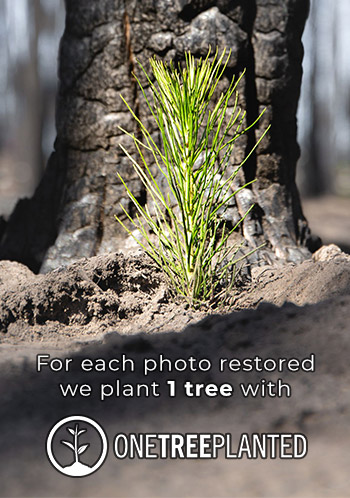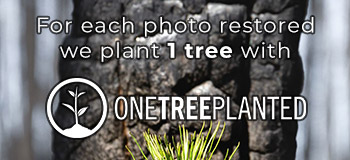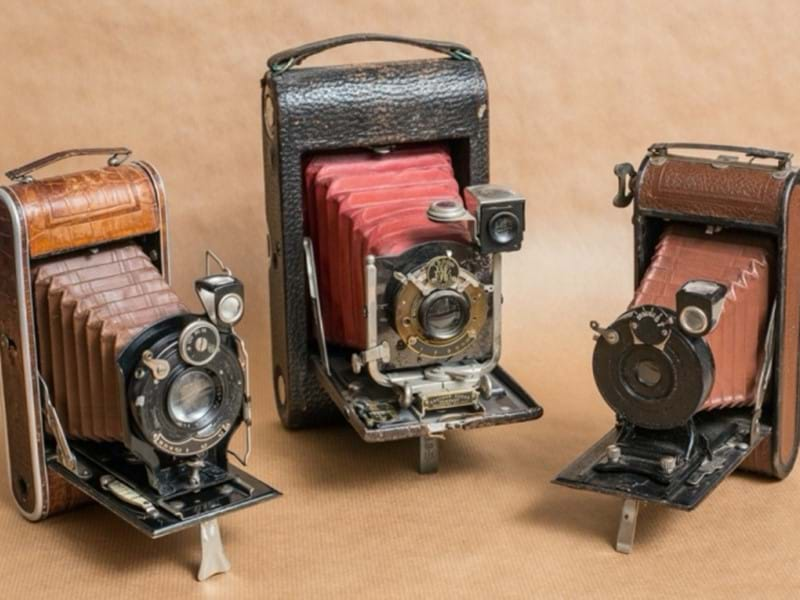What Vintage & Not-So-Vintage Techniques Were Used Before the Existence of Photoshop?
Adobe Photoshop is now the go-to tool for addressing all your photo retouching needs. However, the history of photo retouching goes back to the middle of the 19th century when there were no computers. Find out what kind of vintage and not-so-vintage techniques were used before the era of Photoshop began.
Blotting Technique
Historians award Calvert Richard Jones as the artist who performed the first photo retouching in 1846. He captured a photo of 5 Capuchin friars in Malta. Once he took the picture, he noticed that one of the friars hovers slightly behind the rest of the group. The author probably thought that this fifth person didn’t look good in the composition. Jones and his team blotted the fifth friar out of the paper negative with some India ink. The output was a positive print with a white sky in place of the fifth friar, completely removing him from the photo.

Retouching & Healing
The healing brush is a widely popular tool in Photoshop. It can make scars, spots, and blisters disappear from someone’s face. Photographers and designers were able to create similar effects long before the creation of this software.
Photographers used ink, paint, and a popular tool known as an airbrush to turn models’ faces seem flawless. Interestingly, airbrushes still an integral part of fine art. Today, Photoshop provides a large selection of tools for retouching photos. It has replaced all kinds of retouches done using airbrush, paintbrushes, and ink.
The Retouching Machine
Joan Crawford’s photo of 1931 by George Hurrell is perhaps the most well-known example of glamour retouching. This picture is an excellent example of the pursuit of the perfect body image long before the conception of computer technology.

James Sharp was the artist, and he used a specially designed retouching machine that used vibration on negatives to manually paint and remove fine lines, blemishes, and freckles from the actress’s face. He was successfully able to smoothen the skin to create a flawless look.
Blurring & Distortion in Fashion Photography
Fashion photography was much different and relatively mundane before Richard Avedon came up with his innovative techniques. He used the methods of dodging and burning.

Richard made this genre of photography more appealing and flawless by adding motion and shape. One of his most famous works is the creation of Audrey Hepburn’s portrait of 1967. These techniques helped the industry achieve greater depth and contrast in photos.
There are many more instances of the use of vintage photo retouching techniques long before the beginning of the digital era. Other sectors such as cinema, fashion and glamour later started to rely on these techniques.
Interestingly, some government representatives used these photo manipulation methods to announce or hide matters of public interest of a country for propaganda purposes. For example, political leaders used such techniques to erase their opponents from the history books or to fabricate meetings that never took place.

No worries! We can fix it and make it beautiful.
from our blog
You might also like
Many developments took place before modern photography came into existence.
Here are some fun facts about how the pioneers of this visual art produced their pictures back in the day and the most important inventions.
The Victorian Era was a period that marked the rule of Queen Victoria. It was an era with many inventions, a lot of which are still in use today. Photography was one of them, and undoubtedly one of the greatest.
There are hundreds of historical photos that have been colourised and seem better than their original versions. Here is our selection of iconic pictures from history.
The art and science of photography hit a lot of milestones in a short amount of time. What we call Stereoscopic Photography was just another step in photography's evolving technology in the transition from paintings to photos.





